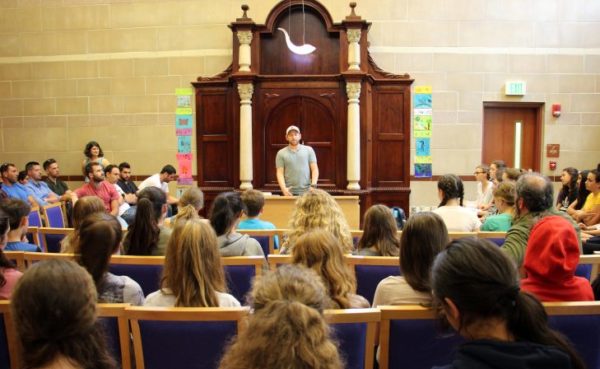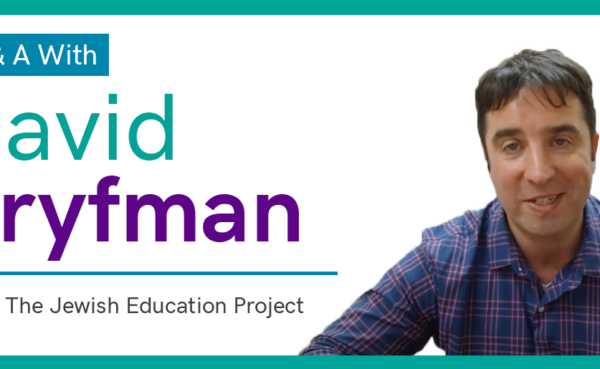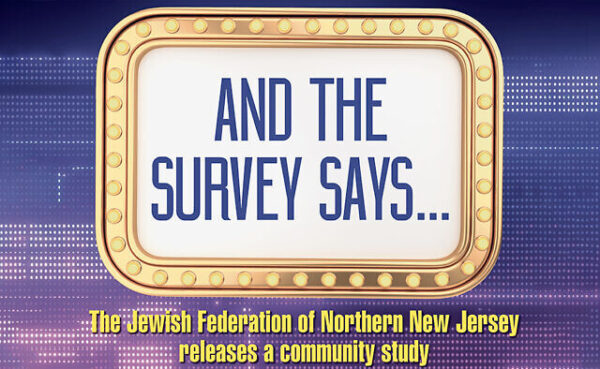Rare Sense Of Optimism At Day School Conference
Newly formed Prizmah brings innovation and 1,000 educators to three-day meeting.
By Gary Rosenblatt
Chicago — Since 2008, when the U.S. economy tanked in the wake of the Madoff Ponzi scheme scandal, Jewish day school conferences have been a place for lay and professional leaders of the movement to kvetch about hard times. And for good reason. Their difficulty in trying to provide quality Jewish and secular education while keeping steep tuition costs in line was a persistent theme. Pessimism was in the air.
The dilemma hasn’t gone away, but this week’s first national Jewish day school conference sponsored by the newly formed Prizmah (Hebrew for prism) has had a decidedly upbeat mood. There is an air of enthusiasm among the more than 1,000 principals, teachers, administrators and lay leaders gathered at a downtown hotel here for three days.

Teachers, administrators from the Wise School in Los Angeles. Courtesy of Prizmah
The birthing process wasn’t easy. It has been more than two years since leading day school funders — primarily the Avi Chai and Jim Joseph Foundations — made clear their belief that it was ineffective to fund the existing five national groups separately. They felt there was too much overlap, and that a single body could serve the common interests of the different streams while allowing them to maintain their own religious identity.
The organizations balked at first, but when faced with the possibility of losing their major funding, had little choice but to agree to form one entity. The five top executives were kept on for six months as Prizmah launched this past year, but the understanding was that none would lead the new group, so as to avoid politicking. The same applied to the five lay chairs of the founding groups.
It was difficult for the leaders to work themselves out of a job, and there was skepticism in the field about the anticipated results.
But I detected little cynicism at this week’s conference, Prizmah’s debut event. A wide range of lay leaders and professionals from around the country told me how impressed they were, starting with the size of the turnout, which was more than double those of pre-Prizmah conferences. They noted the variety and quality of the scores of working sessions, which included three-hour “intensives,” a choice of up to a dozen concurrent 80-minute programs, 45-minute programs and a “playground” area to explore the latest in technology and software.
Among the highlights: an expert game developer on the positive aspects of gaming and why it’s the future of learning; innovations in the field of online Jewish studies; a roundtable on how to navigate respectful discussions on the national political climate in the Trump era; and a Second City presentation on how improv can be a powerful tool for educators.
For me, a session on ways day schools might reach adults who don’t participate in Jewish life was particularly creative, suggesting counter-intuitive techniques.
Dan Libenson, president of the Chicago-based Judaism Unbound/Institute for the Next Jewish Future, posited the notion of offering a product — in this case, education — that is not of the highest caliber but “good enough” to appeal to Jews of little religion, and to improve the product as interest grows.
His analogy was photography. Libenson noted that a decade ago people took quality pictures with traditional cameras. Along came the iPhone and other similar devices that had built-in cameras. The photos they produced weren’t as sharp but the devices were so easy to use that consumers sacrificed some quality for the convenience. As the devices became more popular, the built-in cameras were improved.
What if Judaism used that approach, Libenson suggested, encouraging the participants to be able to articulate “why” day schools rather than just “what” they are and “how” they operate. Perhaps day schools could compete with supplemental Hebrew schools, he speculated, appealing to working parents who need a place for their children to go after school, and providing a less-intensive-than-day-school curriculum. Or maybe offer adult education courses at the day school in the evenings in the hope that non-affiliated Jews will attend and eventually choose to send their children to day schools.
I attended two other sessions that challenged conventional thinking. One dealt with the rationale for teaching Hebrew and the other was on how to instill passion for Israel in students while acknowledging Jerusalem’s internal political problems and tarnished international reputation. The conversations were frank, and there was a healthy sense of safe space among colleagues.
Paul Bernstein, the new CEO of Prizmah, with a diverse background in education, philanthropy and social media, said the organization’s mantra is to “do what we do best and connect the rest.” That translates into offering program services, resources and data, fundraising help and advocacy in making the case for the value of a day school education. And encouraging those in the field to network and collaborate.
He told me that he and Kathy Manning, the chair of Prizmah, spent six months visiting communities large and small around the country to hear what the local needs are. “We are learning from and with” educators, Bernstein said, and are “committed to instilling Jewish values” in making the case for day schools as a vital part of American Jewish life.
The old day school challenges haven’t gone away, but there is a new sense of optimism that Prizmah can make a difference, and be a rare model for collaboration in our all-too-divided community.
Source: The New York Jewish Week




